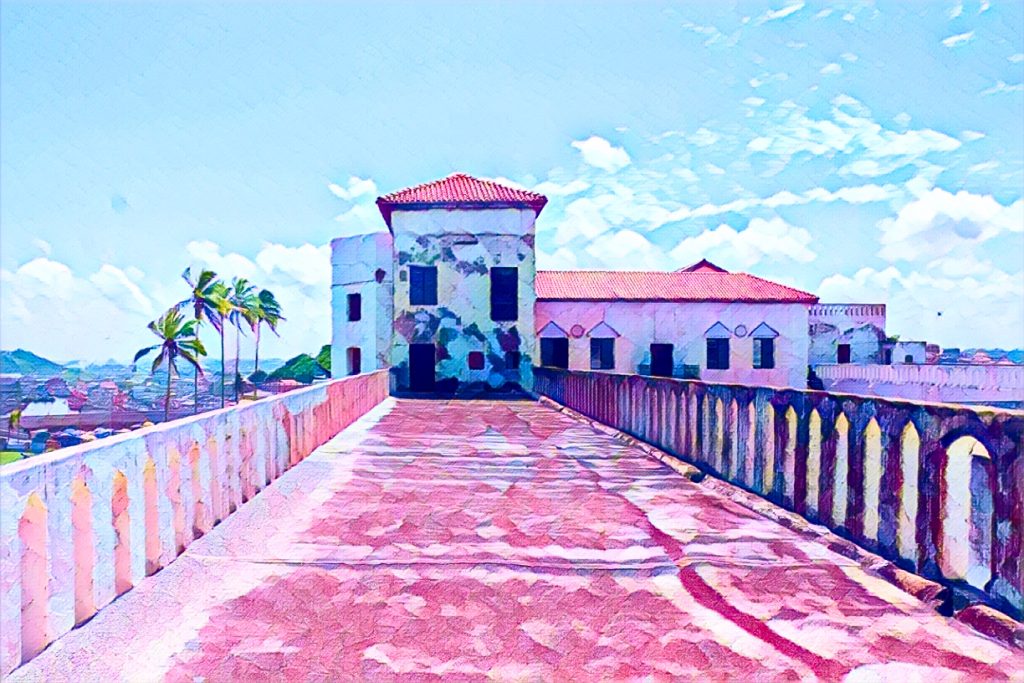KEY POINTS
Elmina Castle, built by the Portuguese in 1482, played a major role in the transatlantic slave trade.
The Dutch and British also controlled Elmina before Ghana gained independence in 1957.
Today, Elmina is a UNESCO World Heritage site and a major tourist attraction in Ghana.
Being a small coastal town in Ghana, Elmina has a rich and bitter history that dates back many centuries. Elmina was built by the Portuguese and has always been one of the oldest European-built settlements in the sub-Saharan African region, and as such, is an invaluable cultural asset of the nation. As the first European settlement in West Africa with a population of 33,576, its story is one of exploration, colonial conquest, and resilience, making it an important destination for anyone interested in African history.
A Town Built on History

Elmina’s history began long before the arrival of European explorers. The region inhabited by the Akan was one of the leading centres of commerce, especially for gold and salt products. It was in the year 1471 that the Europeans, particularly the Portuguese, reached the shores of the Gulf of Guinea and for the first time made contact with the people of this region. Due to the richness of the region, the Portuguese felt that they needed to build a fort to protect their gains.
The Elmina Castle, called São Jorge da Mina Castle at the beginning, was constructed in 1482. This stone-built fortress, located on the north-western coast of Portugal, overlooking the Atlantic Ocean, was designed to guard the Portuguese trade routes and shipments of gold. It subsequently emerged as the core of European engagements in the western part of Africa continent.
From 1637 to 1872, the Portuguese dominated Elmina Castle to provide a strong base for their slave trade monopoly. Nevertheless, the function of the fort changed in the 1600s. With the increase in the scale of the transatlantic slave trade, Elmina emerged as an important centre for the discharge of African individuals for shipment to the Americas. A countless number of men, women, and children marched through the castle’s “Door of No Return, ‘losing their homes and families forever.
Dutch and British Influence
However, the dominance of the Portuguese in Elmina did not last forever. Portuguese trade in the Gold Coast began in 1482, but they lost control of Elmina Castle to the Dutch in 1637 when the Dutch defeated them in a battle. The town and the castle were maintained by the Dutch for more than 200 years, during which it continued to serve as a key location for gold, slave, and ivory trading.
After such a long colonial rule by the Europeans, particularly the British, Elmina received its independence in 1957, when Ghana became an independent nation. The town became an icon of liberty and pride for the people of Ghana because it embodied the country’s defiance against many years of oppression.
A Place of Memory and Reflection

Today, Elmina Castle is on the list of UNESCO World Heritage sites and is a significant tourist destination in Ghana. Many people, including tourists and historians, visit the town to learn about its history, especially the castle’s transatlantic slave trade. Getting an opportunity to tour the castle’s dungeons and be in front of the “Door of No Return” could be heart-wrenching, especially for those whose ancestors were slaves.
Apart from the castle, there are other places of interest to visit in Elmina, including a Dutch Cemetery where most of the Dutch settlers and soldiers that once inhabited the town have been laid to rest. Another is St. Joseph’s Cathedral, which was constructed by the Dutch in the 19th century.
To anyone who wants to learn about the way of life in Elmina that existed before colonization, the fishing community provides the needed insight. The entire population of Elmina has remained fishermen using traditional fishing techniques, thus proof of the historical relationship between the town and the sea.
Elmina’s Modern Significance
Even though slavery was an unfortunate era in the history of Elmina, the town is a lively and progressive one. It is mainly an economy based on fishing, yet one that has witnessed an increase in tourism in the last few decades due to its historical landmarks. Visitors can enjoy the local cuisine, with fresh seafood dishes that reflect the town’s coastal culture.
Its link to the past is well demonstrated by the festivals that the town celebrates annually. Among the most prominent festivals is the Edina Bakatue Festival, which is held in early July traditionally to welcome the fishing season. In such celebrations, people dance, listen to traditional music, pay respect to their ancestors, and engage in a symbolic ‘throwing the net’ ceremony.
A Future Rooted in the Past
A trip to Elmina, especially to Elmina Castle, allows everyone to travel through history while engaging with a very lively and dynamic African city. Every feature of it, starting from the beaches, the local cuisine such as fried fish and plantains, and the historical tour of the slave trade and how it affected the whole of Ghana, is very fascinating and memorable. Elmina is not just a town stuck in traditions and customs. It is a community that continues to grow while honouring its past.




